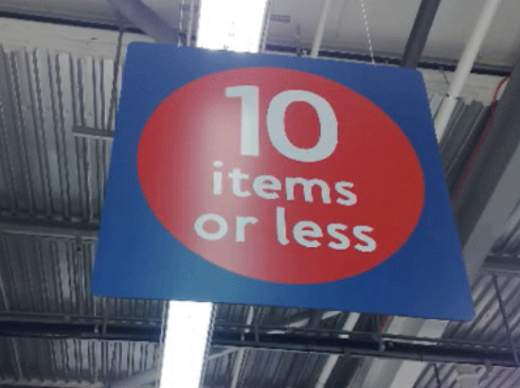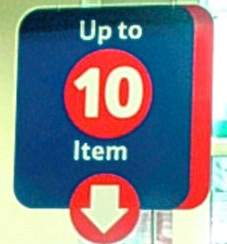Activities For Practising Spoken English
joint article by teachers on a Pilgrims course, 2009, UK
Menu
Background
A few/ few and fewer vs. less
Thing/ Stuff/Thingy
Modifier and adjective collocations (or other collocations and word chunks)
Politeness
Interjections
In the following you will find five sets of activities dealing with some vocabulary, structures and „noises“ typically used in spoken English.
We created these sets during a teacher-development course with our fantabulous teacher Paul Davis on „spoken grammar and vocabulary“ in August 2009. We were a group of teachers from Poland, Spain, France and Germany. Most of us work primarily with secondary, some with adult students. If you would like to contact any of us, please send an email to angela.reinhardt@t-online.de. I will forward your mail to the respective group or author.
All the topics are based on ‘Cambridge Grammar of English’ by M. McCarthy and R. Carter and have been chosen because we feel that in many traditional course books and materials:
- some relevant aspects of vocabulary (Set 1: few/ a few and less/ fewer, set 2: thing/ stuff, set 3 : adjective collocations of maximum degree, e. g. stark naked) and
- useful structures for understatement and hedging (Set 4)
are neglected, and that:
- “noises” such as interjections
hardly occur as a topic for active language mastering although they are easy to learn and apply.
As it is one of our tasks to enable our students to communicate (gossip) in English, these activities will help them to learn spoken English in a more creative and ludic way (properly).
| Level: |
Pre-intermediate to intermediate |
| Time: |
about 30 minutes |
| Aim: |
Understand the different meanings and use the words correctly. |
| Materials: |
Copy of grammar rules,
appropriate number of sets of five slips of paper with one question on each,
photos of signs at cash desks
(newspaper article) |
Activity 1 – A few/few
Write the following sentences on the blackboard:
- He made a few films during his career in London
- He made few films during his career
Have the students work in pairs and discuss these two statements. Can they see any difference in meaning between a few and few?
Ask them to make up 4 sentences using a few and few. The students read out their sentences and comment on the use of few / a few.
Hand out the grammar rule.
Activity 2
Divide the students into groups of 5. Give each group a set of 5 questions (each question is printed on a separate slip of paper). Each student draws a question and asks it to another student. The student should answer using the words few or a few (depending on which one is closer to the truth) and they can add some more details.
Examples of the questions:
- How many text messages are you going to write today?
- How many times a week do you go out?
- How many bad TV programmes did you watch last week?
- How many presents did you get on your last birthday?
- How many famous people have you met?
Activity 3 – Fewer/less
Hand out the photos showing supermarket check out signs, and let them react:
- 10 items or fewer
- 10 items or less
Which one is familiar, spoken English? How do they know?
(source: Cambridge Grammar of English by Carter and Mc Carthy, 50a and 50c p. 103)
Authors:
Maragda Farre Minguell
Beata Mazurek-Przybylska
Azucena XYZ
Rebecca Schurtz


English lesson:
Tesco revises its grammar, but still manages to make a blunder
By Lucy Ballinger
Last updated at 12:11 PM on 01st September 2008

Oops: Tesco sign
Ever queued at the 'ten items or less' checkout at Tesco and found yourself muttering about the appalling grammar in the sign above your head? Probably not. But if you have, then salvation could be on its way. After a long-running and heated debate over whether the signs are linguistically correct, they will now be altered to say: 'Up to ten items'.
Tesco has agreed to change the wording following criticism from supporters of good English who had argued that the signs should say 'ten items or fewer' rather than 'ten items or less'.
The solution was suggested by the Plain English Campaign, and Tesco bosses hope it will please everyone.
A Plain English Campaign spokesman said: 'There is a debate about whether the word should be "less" or "fewer". 'Saying "Up to ten items" is easy to understand and avoids any debate.'
That may prove to be wishful thinking, as some would argue 'Up to ten items' could be taken to mean 'ten items and no more' or 'nine items or fewer'. And not all the new signs are as perfect as they could be - the Daily Mail found one in a Tesco store yesterday that read 'Up to 10 item', with the S missing from 'items'.
A Tesco spokesman said: 'The debate about what is right has been going on for years now, and I still don't think we know if "less" or "fewer" is correct. 'The new signs will be in the rollout of new stores. We are not going to see any new ones in existing shops so shoppers in those will not see the change.' The argument is over whether it is linguistically correct to say 'less than' rather than 'fewer than' when talking about figures.
Some experts say 'fewer' should be used to describe countable things such as exact figures.
They say that 'less' should instead be used to describe quantities which are not countable.
Guidance from the Oxford University Press says: 'Less means "not as much". Fewer means "not as many". This can be tricky when referring to quantities. ‘For example, we say less than six weeks, not fewer than six weeks, because we are not referring to six individual weeks, but to a single period of time lasting six weeks.' Tesco has come under fire for its use of language before.
In July the Plain English Campaign criticised it over repetition, for saying four times on a bag of mixed nuts that it contained a mixture. The words 'mixed nuts' were written in red on the front of the pack. In three other places Tesco told customers they were buying Brazil nuts, almonds, hazelnuts and walnuts. Tesco - which put 'contains milk' on milk bottles two years ago - said it was following rules about food packaging. But a Food Standards Agency spokesman was unaware of regulations on how often information should be repeated.
(Daily Mail)
| Level: |
Pre-intermediate/intermediate |
| Time: |
ca. 30 minutes |
| Aim: |
Making the students aware of the many ways these words can be used and what kind of words they replace. |
| Materials: |
Handout with sentences from the „Cambridge Grammar of English“,
(computer) |
All the exercises are based on the book ‘Cambridge Grammar of English’ by M. McCarthy and R. Carter, 74a and b, p. 147.
Activity 1
Read the sentences and guess what the word ‘thing’ stands for in each sentence.
- Can you pass that thing over there on the bed?
- What shall I do? I haven’t a thing to wear.
- Can you put all your things in the suitcase?
- Love is a very peculiar thing.
- Let’s see how things develop.
- These things take time.
- A holiday? That’s just the thing for you.
- They’re interested in all Japanese things.
- As things stand now, the plane won’t be taking off for another coupe of hours.
- Hi, Pat. How’s things? Fine, thanks. How are you?
After the exercise is done the teacher should elicit from students that the word ‘thing’ is commonly used and that it can replace not only a physical object in the sentence but also abstract ideas such as statements, situations, events, actions, experiences and states.
Activity 2
In this exercise the teacher asks students which word in everyday life conversations can replace the word ‘thing’. If students do not answer, the teacher provides them with the answer ‘stuff’. The teacher should point out that it is rather informal word and is rarely used in written English. They go back to exercise and decide in pairs, in which sentences they can use the word stuff instead of thing.
To make it more authentic, the teacher can present data to students explaining which word is used more often according to British National Corpus and Google fight websites.
National Corpus:
Stuff- 6913
Thing- 33901
Google Fight:
Stuff- 78100000
Thing- 85600000
Activity 3
As an interesting fact for higher level students, the teacher can introduce the word ‘thingy’ as well. The teacher should point out that this word is for spoken English only and should not be used in writing. Colloquial alternatives for this word are ‘thingummy’, ‘thingamabob’ and ‘thingamajig’. The teacher should emphasize the fact that the word ‘thingy’ can be used with reference both to objects and people. The teacher should give several examples of the sentences:
Can you get me that little metal thingy over there on the workbench?
Please send an e-mail to Mr. Thingummy as soon as possible.
Today during classes we have got this thingy coming…
Later students can make up sentences by themselves or in groups.
Authors:
Agnieszka Karolak
Malgorzata Machnio
Carolina Sabater Roura
Magdalena Peret
| Level: |
All |
| Time: |
20 to 30 minutes |
| Aim: |
Recognise and learn two-word collocations |
| Materials: |
Enough slips of paper with the collocations on (one word on each slip),
sticking labels,
(music) |
Write in stripes of paper any collocations SS have to practise, then cut them in two. Put the resulting little pieces of paper with just one word each in a bag. (make sure there is one per student, the teacher may participate if odd numbers)
Lead-in activity
Tell SS to pick one piece as a special secret identity for a party. They must keep it to themselves, so that no one else can see it for the moment. It is important that each student knows what their new “surnames” mean and feels capable of explaining them in English if necessary (they may ask the teacher or look them up in the dictionary).
Consolidation
- Hand SS sticking labels so that they can write their new surname in visible capital letters. Once done, tell them to stick those close to their hearts, stand up and walk around the classroom introducing each other. Demonstrate:
- Hi, I’m Stone. What’s your name?
- My name is Dark. Nice to meet you.
- Dark? That’s a funny surname...what does it mean?
- When they have met all the people at the party, it will be time to dance. SS should stand in a circle, facing each other. Tell them:
“It’s time to dance now. You're going to have to pick a dancing partner. But remember: beauty is only skin deep, so don’t worry about the looks. What really matters abides in people’s hearts. Read all the names again and make a sensible choice. Once you’ve found your other half, get together and stand so that your two names put together really make sense”.
- After some time when you see that all couples have matched, or there is simply no way to get them all together, tell them to stop. It is time to introduce themselves to the rest of the group by saying:
- Hi, we are Stark Naked.
- Hi, we are Stone Deaf.
- Hi, we are Pitch Black.
- Hi, we are Sound Asleep
- Hi, we are Soaking Wet.
- Hi, we are Pure White.
- Hi, we are Bone Dry.
- Hi, we are Rock Hard
- Hi, we are Wide Awake
- Hi, we are Brand New
- To end up with: The whole group can discuss meanings if necessary or think of possible sentences. If the mood is right, they can even actually dance afterwards.
(Source: Cambridge Grammar of English by Carter and McCarthy, 238 g p. 444)
Authors:
Margarita Rodríguez Hernández,
Camilo Ballesteros Arribas,
Jordi Serra Mayoral
| Level: |
Lower to upper intermediate |
| Time: |
30 to 40 minutes |
| Aim: |
To create awareness of today's spoken English vs. formal written English |
| Materials: |
Handout or transparency
with questions and orders that should be worked on,
with formulaic structure of new oral patterns |
Presentation
Learners of English often sound too direct when they ask for help or information.
Here is a way to make them aware of the problem and to show them how they can downtone their requests using formulaic structures.
Lead-in activities
- With a classmate, write five common sentences in your mother tongue to ask for permission, to borrow something or to ask for information. Use the language you usually see in books. Then rephrase these sentences and say them orally to your classmate trying to sound as natural (and polite) as possible.
- Present the following sentences and ask students what kind of response they would expect.
Go and get me the paper in town.
Can you lend me a fiver?
Get your feet off the table.
What time does the shop close?
Where can I find stamps?
Can I use my mobile phone in here?
- Discuss situations in which these statements are possible and likely to be successful. Make
sure your students understand that when talking to strangers these statements and questions
sound too abrupt and need to be phrased in a less direct way to be successful.
Presentation of new oral patterns (for hedging, downtoning, politeness)
Introduce the following formulaic structures:
I don’t suppose you ...
...don’t really ..., do you?
You don’t have ..., do you?
I don’t really feel like ...?
I’m wondering if ... .
You don’t happen to (know) ..., do you?
Consolidation
- Pair up students and ask them to try and rephrase the above requests so that they sound more polite using as many of the structures as possible.
- Ask them to choose one request and create two (or more) mini-situations where they use very polite (hedged, indirect) requests and less polite interaction.
Use of new language
Ask them to present their situations to the whole group.
(Give feedback.)
(Source: Cambridge Grammar of English by Carter and McCarthy, 423 p. 709 to 713)
Authors:
Jose Antonio Fernandez Alonso,
Chus XYZ
Fernando Cuesta Román
Inge Strass-Latzko
| Level: |
Pre-intermediate onwards |
| Time: |
Ca. 30 minutes |
| Aim: |
Learn „noises“ for interjection and get aware that they are language-related and not international |
| Materials: |
Handout or transparency with situations and interjections |
Presentation
Ask students to picture themselves in the following situations:
ON THE MOTORWAY
You’re driving back home in the evening. Suddenly a horrible sewer stink gets into the car. You can’t even breathe!!
IN YOUR FLAT
Your flatmate (nice, but terrible cook) has prepared dinner for both of you. Although the food doesn’t look very promising, you keep smiling and have the first bite. The taste is incredibly disgusting!!
Lead-in activity
Students work together with a partner discussing the following questions:
- Can you think of just ONE word to express what your feelings would be in that situation?
- Check with your partner. Have you got the same word?
- Are they similar in your mother tongue?
Collect some of the students' answers. Then read the situations again and elicit or give the answers:
- And you go: POOOO!!!
- And you go: YUK!
Consolidation/ Use of new language
Give the class the following list of some common English interjections.
- DAMN
- GOSH
- OOPS
- OUCH
- UGH
- YIPEE
Students work in groups on the following questions:
Do you know their pronunciation?
When would you use them? Can you think of any situations?
Is there any equivalent in your mother tongue?
(This exercise helps students to realize that interjections are not international. They are language-related.)
Optional activities for musical/funny groups
- “Interjection concert”
Each person in the group chooses their favourite interjection.
(The teacher makes sure all students know the correct pronunciation).
The group has to end up with a “melody” made up of the different interjections. They perform in front of the class.
- „Interjection waves“
- Establish how the wave travels, e.g. from one end of the circle to the other, from front to back etc.
- Say one interjection; students repeat it one after the other.
- Once four or five students have said this interjection, you start with a second one and students repeat this one as well. (So, while the first interjection is travelling on towards the last student, the second interjection is on the way as well)
- Send some more interjections travelling.
- Stop the activity when it feels right or when the first interjection has reached the end.
(Acknowledgement: we learnt this activity from our trainer Paul Davis.)
(Source: Cambridge Grammar of English by Carter and McCarthy, 113 p. 124/125)
Authors:
Agata Maliszewska – Plaga
Magdalena Majewska
Noemí Ligero i Tormo
Angela Reinhardt

Please check the Methodology for Teaching Spoken Grammar and English course at Pilgrims website.


|